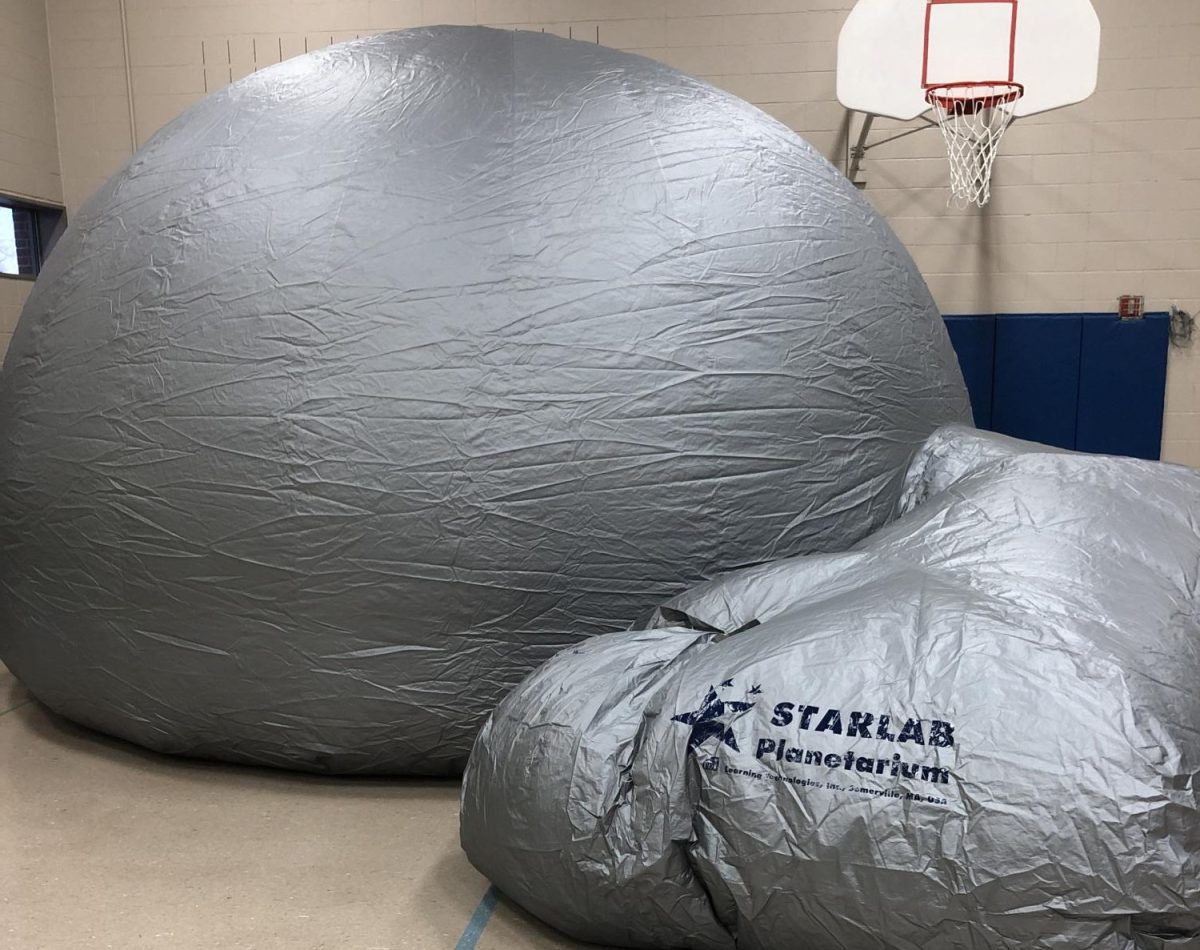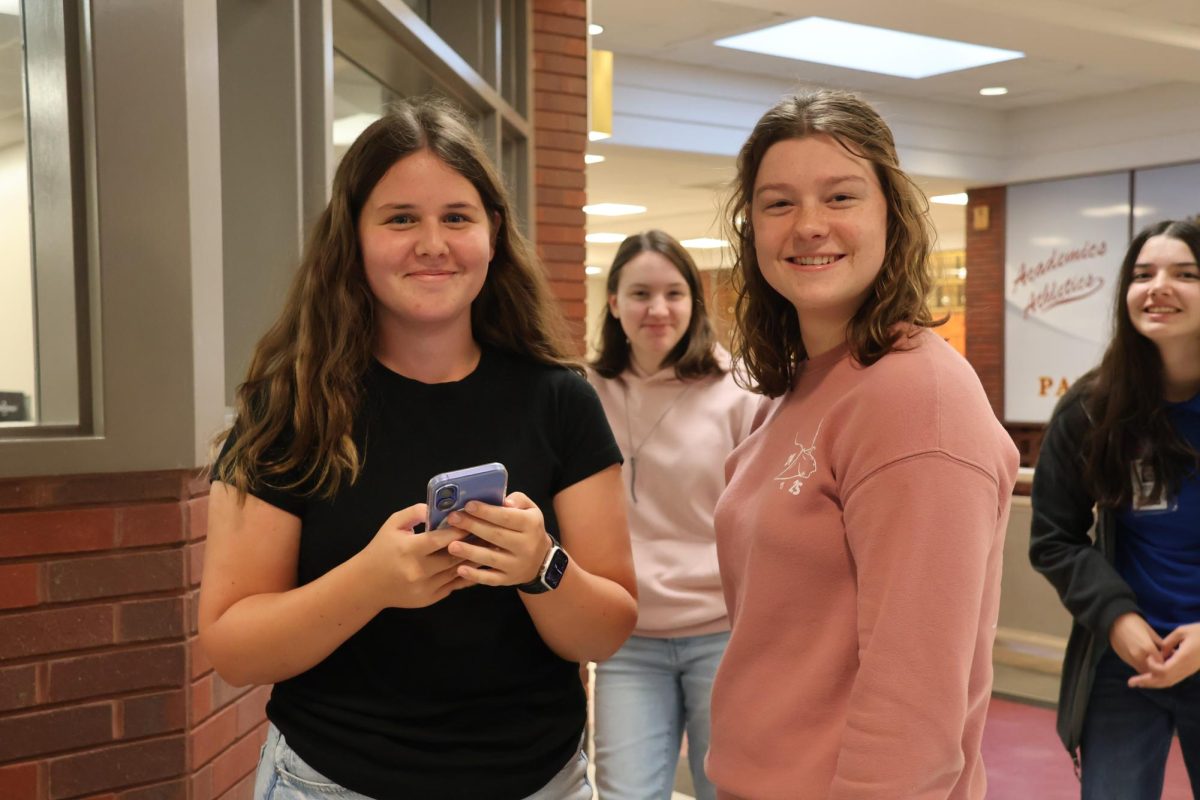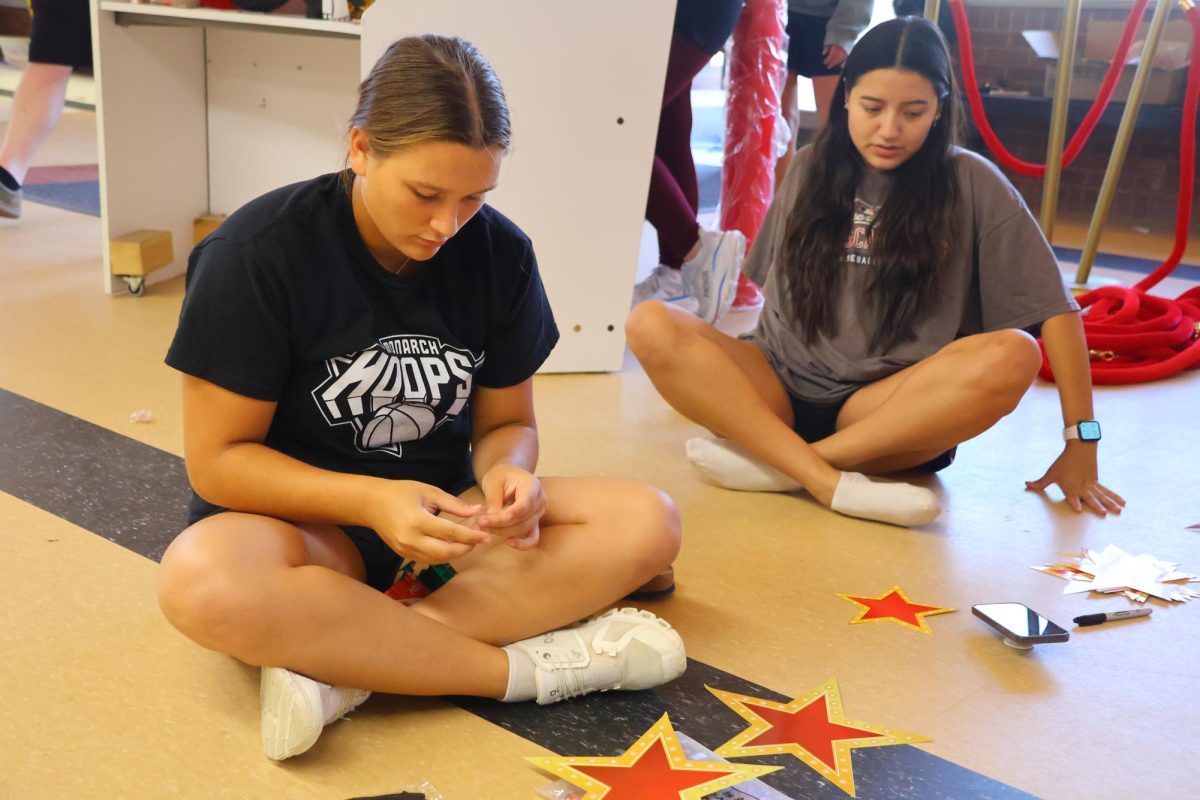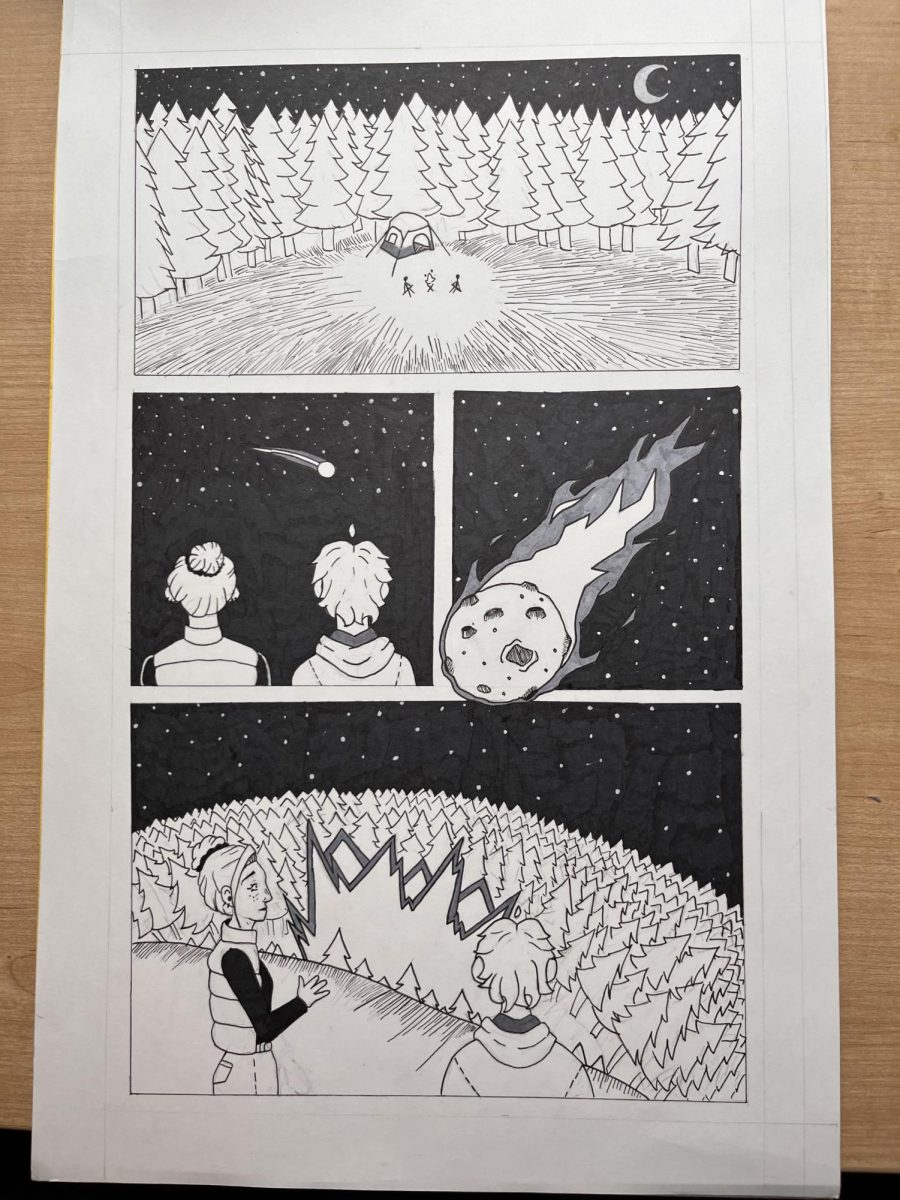For centuries, humans have looked to the stars for guidance and inspiration. In ancient times, they used the stars to tell stories, which we still retell to this day. However, those stars can’t be seen in the daytime, which is where the modern invention of planetariums comes in.
Astronomy class makes use of a planetarium to show students a 3D view of the sky. This year, it was set up in the Excellence Center, since the library it was previously housed in had a lower ceiling. The dome itself is inflatable, so it can be set up almost anywhere.
“There is a projector with a little tiny LED bulb, and it shines through a cylinder that has clear plastic holes, and it shines light on the inside of the dome,” Doug Showell, the astronomy teacher, said. “You can see different stars throughout the night, and I can change the time of year, and different locations on the earth, and then I have a separate cylinder that shows the constellations as the Greeks saw them, like a bear drawn where the big dipper is.”
Students who take astronomy get to go inside the dome and listen as Mr. Showell shows the location of constellations and the stories behind them.
“My favorite part was the constellations activity. We got to hear the mythological context behind the constellations,” Sam Ruppert, former astronomy student, said. “It changed my perspective of how many different cultures had contributed to the mythos of it.”
The goal of the planetarium is to spark curiosity in students about the real-life stars in the night sky.
“It helps you see where things are in the sky and it helps [students] understand that they are out there, because most kids, and adults for that matter, don’t really look up,” Showell said. “They’re looking at their phones, looking at where they’re going, they’re not looking up.”
The location may not be the same, but the pattern of the stars remains unchanged, along with the joy they provide. The key difference is that aspiring astronomers now have more access to the night sky than ever before.








